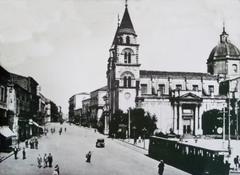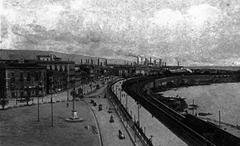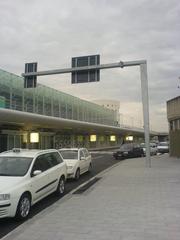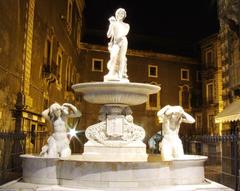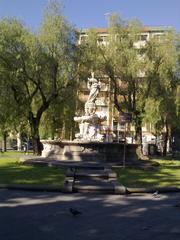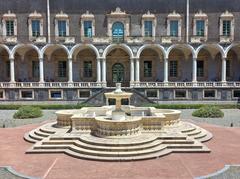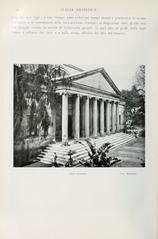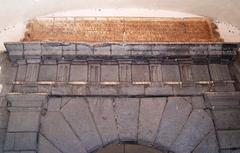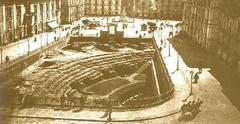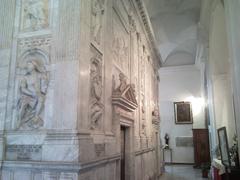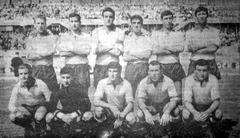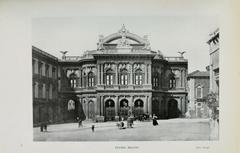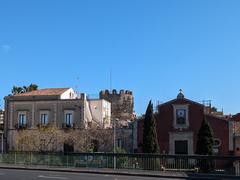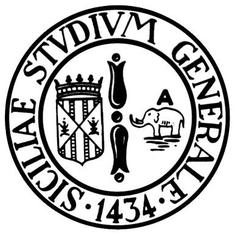
Odeon of Catania: Visiting Hours, Tickets, and Historical Significance
Date: 04/07/2025
Introduction
Nestled in the heart of Catania, Sicily, the Odeon of Catania is a remarkable symbol of the city’s Greco-Roman legacy. Dating to the 2nd century AD, this smaller Roman theatre was built primarily for musical performances and poetic recitals, providing an intimate cultural venue distinct from the grander adjacent Roman Theatre. With its lava-stone construction sourced from Mount Etna and capacity for around 1,500 spectators, the Odeon reflects both the city’s geological identity and its layered history, blending Greek and Roman influences. Today, the Odeon stands as a testament to Catania’s resilience and artistic spirit, attracting visitors eager to explore its rich architectural and cultural heritage (parchiarcheologici.regione.sicilia.it, italythisway.com).
This comprehensive guide offers essential information for visitors—including opening hours, ticket details, accessibility, travel tips, and nearby attractions—while highlighting the Odeon’s enduring cultural importance.
Table of Contents
- Introduction
- Historical Context and Origins
- Architectural Features and Site Layout
- Archaeological Significance
- Visiting Information
- Nearby Attractions
- Frequently Asked Questions (FAQ)
- Summary and Final Recommendations
- References
Historical Context and Origins
The Odeon of Catania is integrally linked to the city’s ancient acropolis, established by Greek settlers in the 4th century BCE. During the Roman Imperial era, the Odeon was constructed alongside the larger Roman Theatre, expanding Catania’s urban and cultural landscape (parchiarcheologici.regione.sicilia.it). Designed for more intimate performances and rehearsals, the Odeon became a social focal point, reflecting Roman and Hellenistic traditions of civic entertainment (italythisway.com).
Throughout the centuries, the Odeon’s use evolved. After the fall of the Roman Empire, it continued to serve as a cultural hub before being subsumed under medieval urban development. Rediscovered and excavated in the 18th and 19th centuries, the Odeon was restored in the 20th century, revealing its original structure and unique building techniques (ferrinihome.com).
Architectural Features and Site Layout
Design and Materials
- Semi-circular layout typical of Roman odea, distinct from the larger main theatre.
- Capacity: Approximately 1,500 spectators, with tiered cavea seating in concentric rows.
- Materials: Built primarily of dark lava stone from Mount Etna, with marble paving in the orchestra.
- Structural Elements: Eighteen radial divisions (cunei) in the seating area, with seventeen original covered corridors still visible. These corridors facilitated movement and reinforced the building.
- Stage Area (Pulpitum): Originally roofed for better acoustics, the stage was designed for music and spoken word, with the ornate scaenae frons (backdrop) now largely lost.
The Odeon’s integration with the adjacent Roman Theatre is architecturally significant, forming a rare dual-theatre complex that underscores the prominence of performance arts in ancient Catania (illeoneblu.com).
Archaeological Significance
As one of the few Roman odea in Sicily, the Odeon provides valuable insight into ancient Sicilian culture. Its proximity to earlier Greek structures illustrates the city’s complex urban evolution. Excavations have unearthed marble statues, busts, and inscriptions, many of which are displayed in the on-site museum. The site’s preservation demonstrates Roman adaptation to Catania’s volcanic landscape and highlights the city’s resilience in the face of natural disasters (ferrinihome.com).
Visiting Information
Visiting Hours and Ticketing
- Standard Hours: Open Tuesday to Sunday, 9:00 AM – 6:00 PM (last entry at 5:30 PM). Closed Mondays and public holidays. Extended hours may apply in summer; always check the official website for updates.
- Tickets: General admission is €8 for adults. Reduced rates (approx. €4) for students and children under 18. Catania residents and children under 18 often receive free entry. Combined tickets grant access to the Roman Theatre and the onsite museum. Tickets available onsite and online (zainoo.com).
Accessibility and How to Get There
- Location: Via Vittorio Emanuele II, 266, in Catania’s historic center. Walking distance from Piazza del Duomo and main transit stops (voyagetips.com).
- Public Transport: Easily accessible via city buses and a short walk from Catania Centrale station.
- Accessibility: Partially accessible for visitors with mobility needs. Some handrails and ramps are available, but ancient surfaces and steps may present difficulties. Contact the site in advance for the latest accessibility updates (illeoneblu.com).
Visitor Facilities and Amenities
- Restrooms: Available near the entrance.
- Gift Shop: Sells guidebooks, souvenirs, and local crafts.
- Information Desk: Offers maps, brochures, and multilingual staff.
- Seating: Limited benches within the park for rest.
- Dining: No cafes inside the park, but numerous options in the surrounding city center (voyagetips.com).
Guided Tours and Special Events
- Guided tours in Italian and English can be booked at the ticket desk or through local operators. Group tours require advance reservation during peak season.
- The Odeon hosts occasional cultural events and summer performances. The annual “Night of the Museums” in May allows for evening visits with special lighting displays (illeoneblu.com, enjoysicilia.it).
Tips for a Rewarding Visit
- Visit early or late in the day to avoid crowds and heat.
- Wear sturdy shoes for uneven terrain.
- Bring sun protection and water, especially in summer.
- Respect all site regulations—do not climb on ancient structures or remove artifacts.
- Photography is allowed for personal use; tripods require permission.
Nearby Attractions
The Odeon is central to Catania’s cluster of historical sites:
- Roman Theatre – Adjacent to the Odeon, it’s the grandest ancient theatre in Catania.
- Piazza del Duomo – Home to the iconic Elephant Fountain and Catania Cathedral.
- Benedictine Monastery – A UNESCO-listed Baroque monument.
- Via Crociferi – Famous for its Baroque churches.
- Terme della Rotonda – Ancient Roman baths nearby.
These sites are all within walking distance, allowing for a comprehensive exploration of Catania’s historical core (thecrazytourist.com).
Frequently Asked Questions (FAQ)
Q: What are the Odeon’s visiting hours?
A: Generally open Tuesday to Sunday, 9:00 AM – 6:00 PM, with possible seasonal adjustments. Closed on Mondays.
Q: How much are tickets?
A: €8 for adults, €4 for children under 18. Reductions for students, groups, and combined tickets with the Roman Theatre.
Q: Is the Odeon accessible for disabled visitors?
A: Partial accessibility; some areas may be difficult to navigate due to ancient terrain.
Q: Are guided tours available?
A: Yes, in Italian and English. Book onsite or through local agencies.
Q: Can I attend events at the Odeon?
A: Yes, the site occasionally hosts concerts and performances. Check the official calendar.
Q: Is photography allowed?
A: Yes, for personal use. Commercial photography and tripods require permission.
Summary and Final Recommendations
The Odeon of Catania is more than an archaeological site—it is a living symbol of the city’s enduring heritage and artistic tradition. Its distinctive architecture, historical significance, and central location make it a must-visit for anyone exploring Catania. With combined ticketing, partial accessibility, and proximity to other major attractions, the Odeon offers a rewarding and educational experience.
Plan your visit during quieter hours for the best atmosphere and photographic opportunities. For official updates, ticketing, and event information, consult Catania’s official tourism website and the regional archaeological portal. To deepen your cultural experience, consider using the Audiala app for audio-guided tours and curated itineraries.
References
- Odeon of Catania: Archaeological Site (parchiarcheologici.regione.sicilia.it)
- Catania Theatre and Odeon Overview (italythisway.com)
- Greek-Roman Archaeological Park of Catania (illeoneblu.com)
- Nomads Travel Guide: Catania
- Catania Travel and Tips (voyagetips.com)
- Zainoo: Teatro Romano & Odeon
- Enjoy Sicilia: Events in Catania
- The Crazy Tourist: 15 Best Things to Do in Catania
- Catania Official Tourism Portal
- Audiala
Images should include descriptive alt text such as “Odeon of Catania Roman theatre ruins” and “Interior seating of the Odeon of Catania made from lava stone” to enhance accessibility and SEO.



